yuraniera
TBD
1999
trying to stop procastinating doing other stuff and actually play a game, i decided to play a game called silent hill...
first off, the atmosphere here is hands down one of the best ive ever played in any game ever (as you no doubt have heard said many many times). whether it's in the obscured streets of silent hill or the bloody, rusty otherworld, you will constantly be on the edge of your seat. there isn't a moment where i felt entirely comfortable aside from that ending sequence. the sound design is also a major factor to how tension works in this game - the ringing, alongside the eraserhead-esque scratching each time an enemy is within your vicinity are really unsettling, especially with interior locations where the sprawling hallways obscure your vision. the rather limiting controls of the game also contribute to this: it wasn't until the final quarter of the game that i figured out how to use l2 to widen your pov, and until that point you better believe i was turning the r stick every time i heard that damn ringing, trying to find whatever nightmarish creature was laying in wait just out of view. in a strange way the ps1's graphical limitations also add to the vibe of the game - the low-poly models sort of add to the dreamlike (nightmarish?) quality of the game and sh1 makes really good use of it. the story doesn't overstay its welcome with minimal dialogue and a fairly straightforward story although almost lynchian way of communicating information. some pretty good characters as well...harry has gotta be one of the realest dads ever...
based on what i've heard i am very much looking forward to silent hill 2. see you then...
first off, the atmosphere here is hands down one of the best ive ever played in any game ever (as you no doubt have heard said many many times). whether it's in the obscured streets of silent hill or the bloody, rusty otherworld, you will constantly be on the edge of your seat. there isn't a moment where i felt entirely comfortable aside from that ending sequence. the sound design is also a major factor to how tension works in this game - the ringing, alongside the eraserhead-esque scratching each time an enemy is within your vicinity are really unsettling, especially with interior locations where the sprawling hallways obscure your vision. the rather limiting controls of the game also contribute to this: it wasn't until the final quarter of the game that i figured out how to use l2 to widen your pov, and until that point you better believe i was turning the r stick every time i heard that damn ringing, trying to find whatever nightmarish creature was laying in wait just out of view. in a strange way the ps1's graphical limitations also add to the vibe of the game - the low-poly models sort of add to the dreamlike (nightmarish?) quality of the game and sh1 makes really good use of it. the story doesn't overstay its welcome with minimal dialogue and a fairly straightforward story although almost lynchian way of communicating information. some pretty good characters as well...harry has gotta be one of the realest dads ever...
based on what i've heard i am very much looking forward to silent hill 2. see you then...
2023
2020
2002
to say i was excited to play future after completing the original jet set radio would be an understatement. i had the concept of love on loop for days on end, and i even wound up playing the first level of the game early in order to test out the emulator i was using (while i was playing the original jet set radio, no less) and was blown away by the game. rose-colored visions of sick-as-hell rail grinding and awesome music filled my head as i trudged through the final stages of jet set radio. i ultimately ended up having a blast with the original, and recently it has become one of my favorite games to go through. unfortunately, i cannot say the same for future.
jet set radio future is not a sequel to jet set radio. it is, instead, a reimagining of that game, with the overall plot retaining elements of the original alongside the gameplay sticking to the series’s roots. the game is set in the fictional location of tokyo-to, the story follows the GGs and their various misadventures, and the game is centered around a radio station called “jet set radio”. the gameplay focuses on spraying graffiti and rail grinding, with a wide variety of playable characters to choose from. this is where the similarities end, however.
coming off of the original jet set radio, the difference most apparent from the start of the game is how each title approaches mission structure. the original was a tightly paced, arcade-type game that encouraged memorization of map layout and system mechanics for optimal route planning. the game was divided into three chapters, with each having their own missions with varied level design. each mission fell under two categories: the first being a mission where the player must spray over a set amount of graffiti “points” within the set time limit, and the second being a PVE type mission where the player had to spray enemies a set amount of times within the time limit (dubbed “tagger’s tag” in future). there are of course exceptions to this rule, most notably within the final mission (and also the “jet” missions available as of chapter 3). future instead opts for a much more varied and “free” mission structure, with the amount of gamemodes increasing drastically, alongside the interesting choice to remove the timer across all of the missions. a rule is established relatively early on in future, where after the player sprays across all the graffiti points in an area the gamemode shifts to one that would typically challenge the player’s understanding of the area’s layout, such as the returning tagger’s tag and all-new jet flag missions. there are more, of course, but it becomes apparent very early on that this rule is not nearly as structurally sound as the original’s mission layout. the first time future utilizes this structure is on 99th street with rapid 99, where after the player spray paints all of the points in the area they will be challenged to a round of jet flag (a race to collect the most amount of flags within the time limit), theoretically challenging the player’s knowledge of the map’s layout.
on paper, this sounds like a great idea for a mission structure, and in all honesty, it is! however, this sound structure is abandoned almost immediately after shaking down rapid 99. the next mission takes place in perhaps the worst area in the entire game…the infamous jet set radio future sewers. an area that punishes mistakes with obscene levels of backtracking, in a game with no load feature (there are indeed save points sprinkled throughout this area). the stage is an upwards climb to spray over specific points in order to open up a passageway to poison jam’s hideout, and this area is where it becomes immediately apparent that the game truly does not care about fleshing out its areas in any meaningful way. after you do enter poison jam’s lair, you are challenged to a round of tagger’s tag against the members of poison jam…in an entirely new area. it should be noted that after clearing both the round of tagger’s tag the game gives you zero incentive to return to either the sewers or the hideout (which in the case of the former might actually be a good thing) unless the player wishes to collect the entirely optional graffiti souls or recruit cube in the postgame. this is a pattern that repeats itself throughout the entire game, where areas will be unlocked for the player to visit only to be utilized in the story mode once for a mission and never to be visited again. thankfully some of these missions are genuinely pretty entertaining - tagger’s tag takes full advantage of the game’s newly refined control scheme to offer an experience that is so much more fun than the original’s version of this gamemode (i still do enjoy the original tagger’s tag a lot), and figuring out routes and locations of graffiti points in the default gamemode is pretty fun at points. however in the case of the latter it is pretty redundant considering some of the more interesting stages never get utilized again (see: kibogaoka hill) which further reinforces the point that in terms of stage design future is primarily quantity over quality. for reference, future has fifteen areas compared to the original’s 5 (no i am not counting gouji’s tower). three of these five areas are fleshed out to an incredible degree - the remaining two, bantam street and grind square were requested to be added to the game as per sega’s attempt to market the game towards a western audience, and are unfortunately utilized only once in the story mode (these levels do have depth, mind you, but as to not go on a tangent about them i will keep it short and sweet) and do fall victim to future’s issue of being used only once in the main campaign. however, the other three are fleshed out to such an incredible degree that after going over the original’s campaign two times in the past week it is truly tragic to see future fall victim to the problems that it does with its world structure.
it should also be mentioned that some of future’s missions are fucking ass, exhibit a being the noise tank reduction mission in the shibuya bus terminal, a pure time-waster in which the player must run into dozens of noise tank members. that’s it. that’s the mission. zero depth, absolutely nothing but a pure and utter time waster to pad out the game’s already incredibly long runtime (at least when compared to the original’s). yet another would be the player’s first visit to the fortified residential area, a stage that in this reviewer’s humble opinion is almost as ass as the sewer mission. the bar is low, however, but this mission does not surpass it by that much at all. backtracking is the word of the day as once again this mission is a climb upwards towards a boss fight (more on that later) which involves the player spraying over various points to unlock passageways…sound familiar? yes indeed reader, this mission is in fact incredibly similar to the aforementioned sewer level from the start of the game and retains many of the problems that mission faced. error is penalized with extreme backtracking and some of the graffiti points are placed in…questionable locations, to say the least. there is also a timer present throughout the mission, however it is set to thirty fucking minutes for each of the game’s sections and does not pose any risk whatsoever to the player. the stage sucks to get through. i would honestly have preferred it if the game killed me each time i fell because the respawn times are honestly not that long and backtracking my way up to the point that i fell from takes way too much time. thankfully the next few missions are pretty ok (i don’t remember having any significant issues with them, anyways) and since it was towards the end of the game the final mission occurred pretty soon afterwards, which was in all honesty sick as hell. tagger’s tag followed up by a psychedelic boss fight, all while the best track in the game plays for the entirety of the segment? don’t mind if i do…
another change to the game’s structure is the introduction of various combat sequences. in the first game, fighting back wasn’t really an option the player was given. sure, you could blow up helicopters (cool as shit!) and stall onishima and various other enemies, but it was the least of your concerns as evading them and spraying graffiti ultimately took priority over your very limited combative options. now, in future, entire segments of the game are dedicated to fighting your enemies, be it generic enemy formations or boss enemies - the game has changed when it comes to fighting your enemies. at various intervals in the main campaign, you will enter combat with hostiles. you can generally defeat regular enemies by knocking them over by running into them, and then spraying them with your graffiti. some stronger enemies may require a boost to knock over! and of course, the general rule of thumb when it comes to boss enemies is that there will be a point that you must spray with graffiti multiple times that is generally obscured in some way or another. there is truly not that much depth to combat in this game and, depending on who you ask, will probably be considered either a good thing or a bad thing. for me, i would probably stand somewhere in the middle between the two. it’s never complex or annoying enough for me to hate it, but it shows up way too often for me to enjoy it to any degree. some of the boss enemies are pretty cool though, and generally shake up the flow of things. they’re all way too easy to defeat though.
that last statement leads me into another big issue i have with the game: it is far too easy. moments where i would find satisfaction for figuring something out or situations where i had to overcome a significant obstacle are truly few and far between and are generally reserved for the postgame missions. areas are never truly exploited in any meaningful way to deliver challenge to the player, and the game’s combat is never difficult in the slightest. in any other game, this might not have been such an issue, but in future, a game with no difficulty options and a follow up to a game that required skill and a fundamental understanding of the game itself to clear.
normally in my reviews at some point or another i mention the game’s overall “vibe” and soundtrack. and the time…is now. future exploits Y2K aesthetics and vibes to create a genuinely impressive atmosphere and world that is both similar to the original and simultaneously incredibly distinct from it. while the original pioneered cel-shaded graphics and is to this day one of the coolest games to look at and listen to, future is overall a much cleaner experience overall. it still uses cel-shading to depict its cartoonish world and characters, but there is a much clearer focus on realism that wasn’t present in the original. not only that, but the general idea that defines future as “the future” is this concept of what the future should be. character designs have evolved to the point where some seem straight out of a science fiction film, the noise tanks are pure robots, beat’s headphones now have antennae protruding from each side, yoyo has dyed his hair green…and the list goes on. people have described this concept as “spacey” before and in all honesty that is an incredibly apt descriptor for the game’s overall feel. it’s a lot more free and open in a way that the first game wasn’t, and it’s clear that in that regard the gameplay has likewise evolved in the same direction as everything else. another point of discussion is the game’s soundtrack. i will say it now: some of the tracks do not work for me. licensed tracks were something the first game did incredibly well and in future there are only a few i would say i like (too many latch brothers tracks for my liking, but that’s probably just me). as for the naganuma tracks, i would consider almost all of them vastly superior to his work on the original. they’ve all been constructed with a much larger focus on electronic instrumentals, perhaps to reflect the overall design change future takes when compared to the original, and all of them are generally just fantastic pieces to listen to. if not for the licensed tracks i would likely consider this game’s soundtrack superior to the original. that being said just as there is a much wider focus on variety in the game’s missions, there is likewise a ton of variety in the game’s soundtrack, and even if some of the tracks do suck to listen to at points there is a very clear intention with the game’s selection of music and genres.
if i had to choose one element of future that i would consider consistently great it would have to be the game’s overhaul of the original’s general control scheme. turning can now be done on a dime, whereas in the original it took at least one second to accomplish. your character controls much more smoothly overall, their speed has been buffed slightly and boosting now requires resources a la boost-era sonic, but lasts for much longer overall. spraying can now be done while moving, you can theoretically complete entire graffiti-based levels without ever having to stop. another addition to future is the air/rail trick system. this system allows you to perform tricks in the air or on rails by using your x/y buttons. it can be finicky at points (the timing of the tricks, especially the y tricks, are entirely speed dependent) but figuring out how to use them and maintain high momentum was easily one of the highlights of the game, at least in terms of difficulty. as boosting is no longer performed with one of the controller’s triggers, camera control is now the only function used on the left trigger whereas spraying is reserved for the right trigger, a change that is welcome as having the camera control button isolated makes some segments of the game much easier (tagger’s tag) than they were in the original.
at the end of the day i don’t think future is a bad game. it has all the markings of a great follow-up: it refined elements of the original that fans disliked and is more jet set radio, which isn’t a bad thing as far as i am concerned. as for me, however, i do like some elements of the game, but as a package it ultimately fell flat in surpassing the original. jet set radio was a tightly paced, two hour game disguised as a five to seven hour one. future is a bloated, eight to ten hour game that is truly that length no matter which way you cut it. maybe the future isn’t all it’s cracked up to be…
jet set radio future is not a sequel to jet set radio. it is, instead, a reimagining of that game, with the overall plot retaining elements of the original alongside the gameplay sticking to the series’s roots. the game is set in the fictional location of tokyo-to, the story follows the GGs and their various misadventures, and the game is centered around a radio station called “jet set radio”. the gameplay focuses on spraying graffiti and rail grinding, with a wide variety of playable characters to choose from. this is where the similarities end, however.
coming off of the original jet set radio, the difference most apparent from the start of the game is how each title approaches mission structure. the original was a tightly paced, arcade-type game that encouraged memorization of map layout and system mechanics for optimal route planning. the game was divided into three chapters, with each having their own missions with varied level design. each mission fell under two categories: the first being a mission where the player must spray over a set amount of graffiti “points” within the set time limit, and the second being a PVE type mission where the player had to spray enemies a set amount of times within the time limit (dubbed “tagger’s tag” in future). there are of course exceptions to this rule, most notably within the final mission (and also the “jet” missions available as of chapter 3). future instead opts for a much more varied and “free” mission structure, with the amount of gamemodes increasing drastically, alongside the interesting choice to remove the timer across all of the missions. a rule is established relatively early on in future, where after the player sprays across all the graffiti points in an area the gamemode shifts to one that would typically challenge the player’s understanding of the area’s layout, such as the returning tagger’s tag and all-new jet flag missions. there are more, of course, but it becomes apparent very early on that this rule is not nearly as structurally sound as the original’s mission layout. the first time future utilizes this structure is on 99th street with rapid 99, where after the player spray paints all of the points in the area they will be challenged to a round of jet flag (a race to collect the most amount of flags within the time limit), theoretically challenging the player’s knowledge of the map’s layout.
on paper, this sounds like a great idea for a mission structure, and in all honesty, it is! however, this sound structure is abandoned almost immediately after shaking down rapid 99. the next mission takes place in perhaps the worst area in the entire game…the infamous jet set radio future sewers. an area that punishes mistakes with obscene levels of backtracking, in a game with no load feature (there are indeed save points sprinkled throughout this area). the stage is an upwards climb to spray over specific points in order to open up a passageway to poison jam’s hideout, and this area is where it becomes immediately apparent that the game truly does not care about fleshing out its areas in any meaningful way. after you do enter poison jam’s lair, you are challenged to a round of tagger’s tag against the members of poison jam…in an entirely new area. it should be noted that after clearing both the round of tagger’s tag the game gives you zero incentive to return to either the sewers or the hideout (which in the case of the former might actually be a good thing) unless the player wishes to collect the entirely optional graffiti souls or recruit cube in the postgame. this is a pattern that repeats itself throughout the entire game, where areas will be unlocked for the player to visit only to be utilized in the story mode once for a mission and never to be visited again. thankfully some of these missions are genuinely pretty entertaining - tagger’s tag takes full advantage of the game’s newly refined control scheme to offer an experience that is so much more fun than the original’s version of this gamemode (i still do enjoy the original tagger’s tag a lot), and figuring out routes and locations of graffiti points in the default gamemode is pretty fun at points. however in the case of the latter it is pretty redundant considering some of the more interesting stages never get utilized again (see: kibogaoka hill) which further reinforces the point that in terms of stage design future is primarily quantity over quality. for reference, future has fifteen areas compared to the original’s 5 (no i am not counting gouji’s tower). three of these five areas are fleshed out to an incredible degree - the remaining two, bantam street and grind square were requested to be added to the game as per sega’s attempt to market the game towards a western audience, and are unfortunately utilized only once in the story mode (these levels do have depth, mind you, but as to not go on a tangent about them i will keep it short and sweet) and do fall victim to future’s issue of being used only once in the main campaign. however, the other three are fleshed out to such an incredible degree that after going over the original’s campaign two times in the past week it is truly tragic to see future fall victim to the problems that it does with its world structure.
it should also be mentioned that some of future’s missions are fucking ass, exhibit a being the noise tank reduction mission in the shibuya bus terminal, a pure time-waster in which the player must run into dozens of noise tank members. that’s it. that’s the mission. zero depth, absolutely nothing but a pure and utter time waster to pad out the game’s already incredibly long runtime (at least when compared to the original’s). yet another would be the player’s first visit to the fortified residential area, a stage that in this reviewer’s humble opinion is almost as ass as the sewer mission. the bar is low, however, but this mission does not surpass it by that much at all. backtracking is the word of the day as once again this mission is a climb upwards towards a boss fight (more on that later) which involves the player spraying over various points to unlock passageways…sound familiar? yes indeed reader, this mission is in fact incredibly similar to the aforementioned sewer level from the start of the game and retains many of the problems that mission faced. error is penalized with extreme backtracking and some of the graffiti points are placed in…questionable locations, to say the least. there is also a timer present throughout the mission, however it is set to thirty fucking minutes for each of the game’s sections and does not pose any risk whatsoever to the player. the stage sucks to get through. i would honestly have preferred it if the game killed me each time i fell because the respawn times are honestly not that long and backtracking my way up to the point that i fell from takes way too much time. thankfully the next few missions are pretty ok (i don’t remember having any significant issues with them, anyways) and since it was towards the end of the game the final mission occurred pretty soon afterwards, which was in all honesty sick as hell. tagger’s tag followed up by a psychedelic boss fight, all while the best track in the game plays for the entirety of the segment? don’t mind if i do…
another change to the game’s structure is the introduction of various combat sequences. in the first game, fighting back wasn’t really an option the player was given. sure, you could blow up helicopters (cool as shit!) and stall onishima and various other enemies, but it was the least of your concerns as evading them and spraying graffiti ultimately took priority over your very limited combative options. now, in future, entire segments of the game are dedicated to fighting your enemies, be it generic enemy formations or boss enemies - the game has changed when it comes to fighting your enemies. at various intervals in the main campaign, you will enter combat with hostiles. you can generally defeat regular enemies by knocking them over by running into them, and then spraying them with your graffiti. some stronger enemies may require a boost to knock over! and of course, the general rule of thumb when it comes to boss enemies is that there will be a point that you must spray with graffiti multiple times that is generally obscured in some way or another. there is truly not that much depth to combat in this game and, depending on who you ask, will probably be considered either a good thing or a bad thing. for me, i would probably stand somewhere in the middle between the two. it’s never complex or annoying enough for me to hate it, but it shows up way too often for me to enjoy it to any degree. some of the boss enemies are pretty cool though, and generally shake up the flow of things. they’re all way too easy to defeat though.
that last statement leads me into another big issue i have with the game: it is far too easy. moments where i would find satisfaction for figuring something out or situations where i had to overcome a significant obstacle are truly few and far between and are generally reserved for the postgame missions. areas are never truly exploited in any meaningful way to deliver challenge to the player, and the game’s combat is never difficult in the slightest. in any other game, this might not have been such an issue, but in future, a game with no difficulty options and a follow up to a game that required skill and a fundamental understanding of the game itself to clear.
normally in my reviews at some point or another i mention the game’s overall “vibe” and soundtrack. and the time…is now. future exploits Y2K aesthetics and vibes to create a genuinely impressive atmosphere and world that is both similar to the original and simultaneously incredibly distinct from it. while the original pioneered cel-shaded graphics and is to this day one of the coolest games to look at and listen to, future is overall a much cleaner experience overall. it still uses cel-shading to depict its cartoonish world and characters, but there is a much clearer focus on realism that wasn’t present in the original. not only that, but the general idea that defines future as “the future” is this concept of what the future should be. character designs have evolved to the point where some seem straight out of a science fiction film, the noise tanks are pure robots, beat’s headphones now have antennae protruding from each side, yoyo has dyed his hair green…and the list goes on. people have described this concept as “spacey” before and in all honesty that is an incredibly apt descriptor for the game’s overall feel. it’s a lot more free and open in a way that the first game wasn’t, and it’s clear that in that regard the gameplay has likewise evolved in the same direction as everything else. another point of discussion is the game’s soundtrack. i will say it now: some of the tracks do not work for me. licensed tracks were something the first game did incredibly well and in future there are only a few i would say i like (too many latch brothers tracks for my liking, but that’s probably just me). as for the naganuma tracks, i would consider almost all of them vastly superior to his work on the original. they’ve all been constructed with a much larger focus on electronic instrumentals, perhaps to reflect the overall design change future takes when compared to the original, and all of them are generally just fantastic pieces to listen to. if not for the licensed tracks i would likely consider this game’s soundtrack superior to the original. that being said just as there is a much wider focus on variety in the game’s missions, there is likewise a ton of variety in the game’s soundtrack, and even if some of the tracks do suck to listen to at points there is a very clear intention with the game’s selection of music and genres.
if i had to choose one element of future that i would consider consistently great it would have to be the game’s overhaul of the original’s general control scheme. turning can now be done on a dime, whereas in the original it took at least one second to accomplish. your character controls much more smoothly overall, their speed has been buffed slightly and boosting now requires resources a la boost-era sonic, but lasts for much longer overall. spraying can now be done while moving, you can theoretically complete entire graffiti-based levels without ever having to stop. another addition to future is the air/rail trick system. this system allows you to perform tricks in the air or on rails by using your x/y buttons. it can be finicky at points (the timing of the tricks, especially the y tricks, are entirely speed dependent) but figuring out how to use them and maintain high momentum was easily one of the highlights of the game, at least in terms of difficulty. as boosting is no longer performed with one of the controller’s triggers, camera control is now the only function used on the left trigger whereas spraying is reserved for the right trigger, a change that is welcome as having the camera control button isolated makes some segments of the game much easier (tagger’s tag) than they were in the original.
at the end of the day i don’t think future is a bad game. it has all the markings of a great follow-up: it refined elements of the original that fans disliked and is more jet set radio, which isn’t a bad thing as far as i am concerned. as for me, however, i do like some elements of the game, but as a package it ultimately fell flat in surpassing the original. jet set radio was a tightly paced, two hour game disguised as a five to seven hour one. future is a bloated, eight to ten hour game that is truly that length no matter which way you cut it. maybe the future isn’t all it’s cracked up to be…
2000
2000
awesome game. simply filled to the brim with energy, movement and style - the game feels alive. there's rarely a moment on screen where something isn't moving: characters bouncing around in their idle animations in the garage, enemies getting pissed off when you escape them, hell, professor k's entire body is jamming along to the beat. the game controls wonderfully as well, i've heard a lot of complaints in regards to the game's control speed but i actually think some of the most fun i had in the game was figuring out how to work around the game's limited perspective and...interesting level design. devising strategies, routes and ways to complete the levels within the time limit will never not be entertaining, and simply becoming one with the overall atmosphere and vibe of the game is an experience of its own, god i love the soundtrack. so much of the game is just full of creativity, you can really tell how much love was put into this game. easily one of the most fun experiences ive had with a game ever and another reminder as to why i love the medium so much.
on to the FUTURE
on to the FUTURE
2001
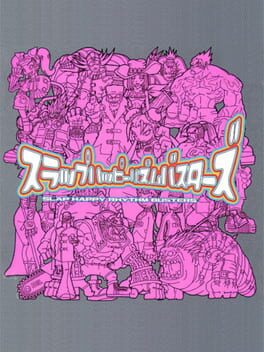

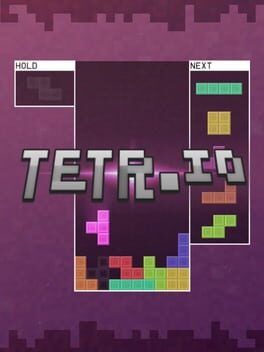

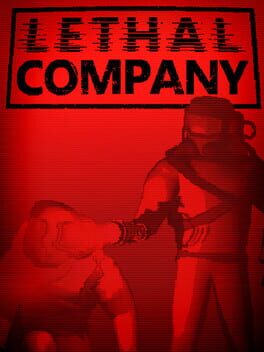

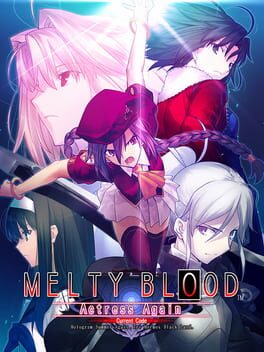
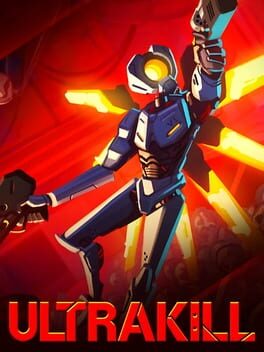
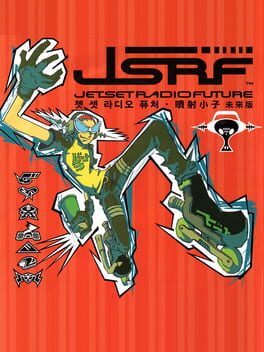
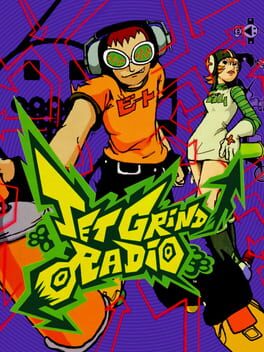
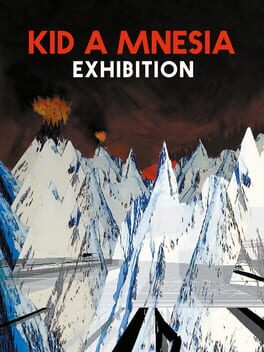
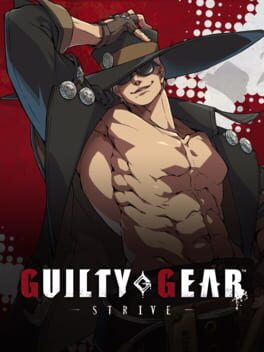
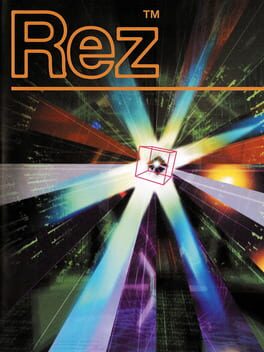
![Under Night In-Birth Exe:Late[cl-r]](https://images.igdb.com/igdb/image/upload/t_cover_big/co25f8.jpg)